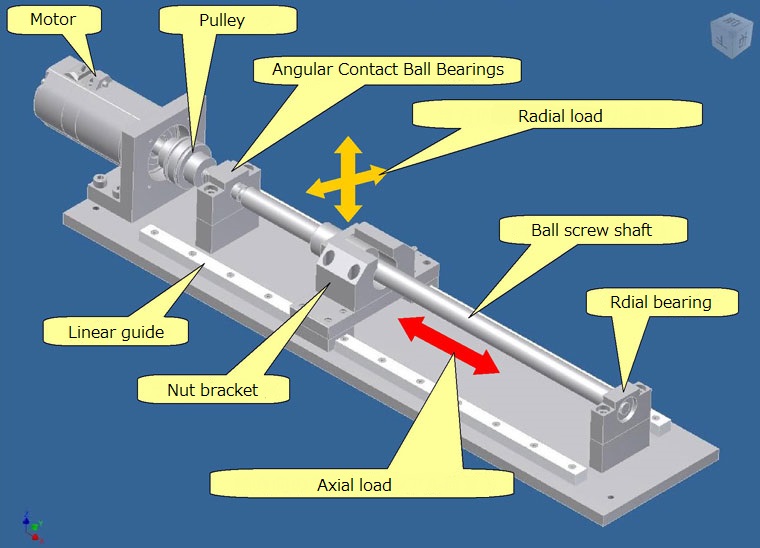What peripheral elements are necessary to make a ball screw work? (1)
Since a ball screw is a mechanical element that convert rotational motion into linear motion, it cannot be used alone.
As with axial mechanical elements in general, the ball screw needs a mechanical element to support the rotating shaft since a ball screw works by rotating its shaft.
The mechanical element that supports the shaft is called a bearing.
Generally, the bearing used for a ball screw is called ball bearing and it is a type of rolling bearing. Other bearings in addition to rolling bearings are: slide bearing, magnetic bearing, fluid bearing, etc.
The main role of a bearing, regardless of its type, is to receive the load from the axis and support the rotating axis.
When used with a ball screw, the load on the bearing is as described below.
When the ball screw is used as shown in the figure below, the load in the radial direction is supported by the guide rail.
To move a weight on a table, the ball screw needs to be rotated to generate thrust in the axial direction.
However, for the generated thrust to move the weight, the thrust needs to be received by something.

One of the main roles of a bearing used in combination with a ball screw is to receive the load (thrust or reaction force) in the axial direction that works on the ball screw.
Generally, a bearing used with ball screws is a "combined angular contact ball bearing" because they offer the following advantages:
• Can receive load in the axial and radial direction.
• Backlash inside the bearing can be made zero by preloading.
This possibility to "make the backlash zero" is a very important characteristic for a ball screw to be used in precision positioning.
There are other mechanical elements that are necessary for using ball screws; however, bearing is especially important among all.
Both the ball screw and ball bearing are based on the same principle of "balls rolling in between two grooves", so, they can be considered very close elements.
